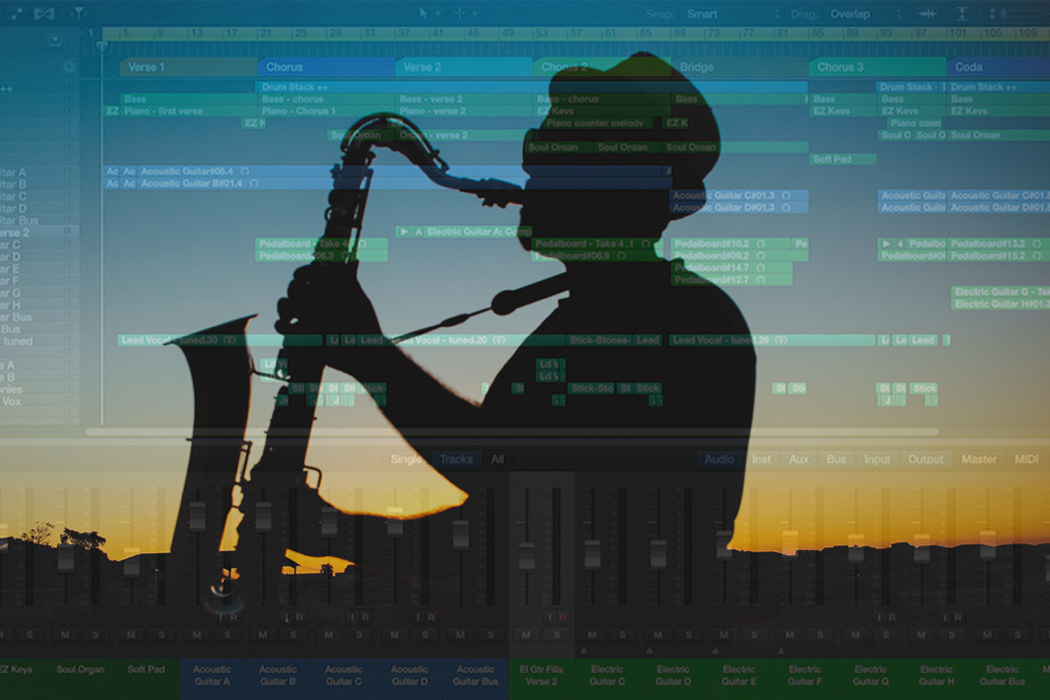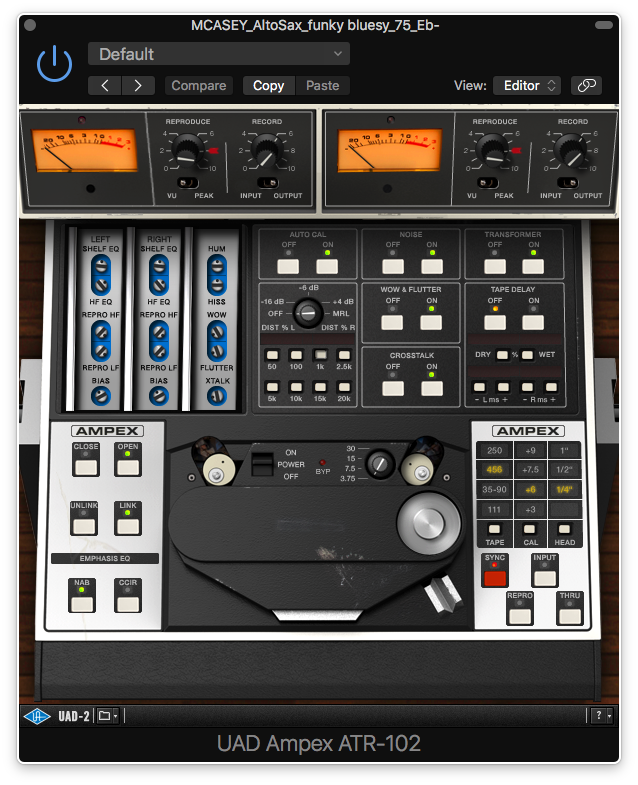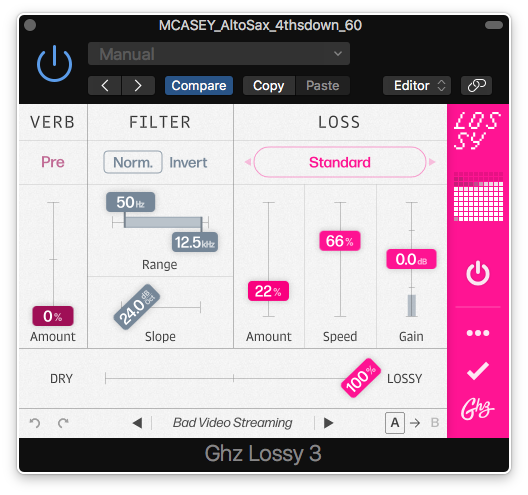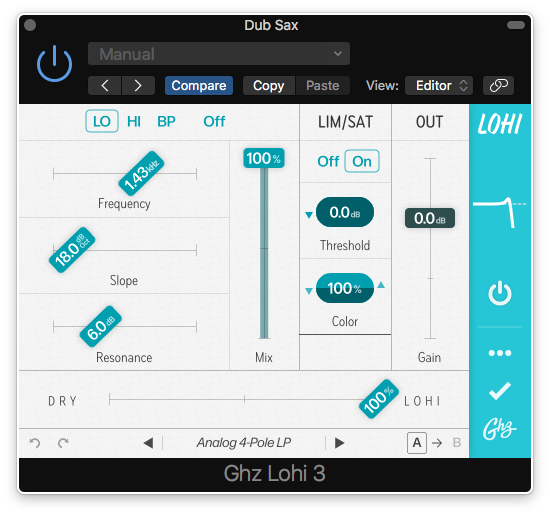
Here at Soundfly, we love it when our favorite artists go out and create tools that are universally useful to producers of all kinds. That’s why I was ecstatic to find out that one of our own, Flypaper author and jazz composer, Mike Casey, was producing a one-of-a-kind saxophone sample pack with our friends at Splice, called “Sounds of Surprise.” (how intriguing!)
So I jumped at the opportunity to test the pack out.
To be honest, as a producer, it’s been a while since I’ve had a chance to play around with a collection of well-recorded sax samples. Since they’re usually very melodic, it’s easy to let samples like this just be the hook you build your track around — which is fine — but that doesn’t do much to help you develop your identity as a beat producer. Nor does working in this way ever really get you thinking “outside the box” creatively.
So for most of these, I did my best to get past using them in a purely melodic, or looping, context, in order to show off the breadth of what you can accomplish with these source samples. Here are five ways I was able to transform Casey’s inspiring sample pack into tracks with very different emotional and practical beat backdrops.
If you’d like to give Mike Casey’s “Sounds of Surprise” pack a shot, head over to Splice and submit what you come up with to their “Firestarter” contest before December 12, for a chance to win the full pack as well as shout outs from Casey and Splice!
1. Sax Idea A (Stevie Wonder-esque Groove)
The most basic way you can use these is to look through the pack and pick something that inspires you. For this idea, I grabbed “MCASEY_AltoSax_funky bluesy_75_Eb-” because it sounded like a pretty complete phrase and I was eager to sink my teeth in.
It felt a bit slow, so I used flextime to help me kick the tempo up to 98 BPM. Then I dressed it up to sound a bit older with Goodhertz’s Vulfcomp compressor and the UAD Ampex ATR-102 tape emulation plugin. My favorite thing to do with the Ampex is to put the “machine” in sync and 3.75 IPS — instant vintage sound. From there, I added a tiny bit of Little Plate reverb from Soundtoys to complete the vibe of the sax.
 The rest of the instruments were dropped in around it. I noodled around with some chords, with Gnarls Barkley’s “Crazy” hanging in the back of my head. I leaned on flextime again, but this time, with the speed setting to make a breakbeat that felt really laid back. To cap it off, I dropped in a clavinet, thinking to give it a Stevie Wonder “Superstition” type feel, something to add a bit of depth to the looping singularity of the track.
The rest of the instruments were dropped in around it. I noodled around with some chords, with Gnarls Barkley’s “Crazy” hanging in the back of my head. I leaned on flextime again, but this time, with the speed setting to make a breakbeat that felt really laid back. To cap it off, I dropped in a clavinet, thinking to give it a Stevie Wonder “Superstition” type feel, something to add a bit of depth to the looping singularity of the track.
2. Sax Idea B (Chill-Hop)
For the next track, I focused my sights on “MCASEY_AltoSax_4thsdown_60,” a descending single line with a lot of tonal information, but balanced with some nice space as well. This was another instance where I was just simply inspired by the sample itself. I like the triplet feel here, and decided to chop a loop out of it. I processed it with Goodhertz’s Lossy, one of my favorite weird-ifying plugins to give it a less-than-perfect sound. On the turnaround, I reversed the sample to mix things up a little.

From there, I penciled in some chords, that I ultimately decided sounded more interesting when they were arpeggiated, added a portamento-laden synth lead, and programmed some drums that had a little hip-hop feel to them.
3. Sax Idea C (Mid-Eastern)
This one kinda wrote itself. As the filename “MCASEY_TenorSax_Middleeast_90” suggests, it has this middle eastern modality to it, so I just embraced that. I wound up processing the raw sample with Vulfcomp and Logic’s Amp Designer. I started by chopping up the loop, and stuttering the last bar.
I also took the unedited loop, and put it on a new track, where I used flextime’s algorithm, flexpitch to get a MIDI version of the performance. I used this MIDI performance as the basis to create the string patch timings and arrangement.

Then I pulled up Damage, a Heavyocity instrument for Kontakt, and found an organic loop that I liked. I imported the same drum kit from the chill-hop track to program a beat and techy hats. The piano part works kind of like a counter theme to the mysterious eastern sax riff. It gives it an extra little bit of that Jeff Beal Rome feel to the mix.
4. Sax Idea D (Glitch Groove)
This track was actually a project I’d been tinkering with before, but it felt somewhat incomplete. I started looking through the sax samples and wanted to find something kind of melodic, and then something to turn the phrases around. I wound up using “MCASEY_AltoSax_Falling_60_Gminor” and “MCASEY_AltoSax_jagged pentatonic down_120_Ab,” and processing them each slightly differently.
For the first sample, I actually wound up pitching it up an octave with Soundtoys’ Little Alterboy, which gave it sort of an ethereal strings-like quality. Then I distorted it with Devil-loc audio level destroyer, and knocked the high end off with Goodhertz LoHi.

With the other sample, I stuttered it a little, and let it swing the phrase back around. Similarly, I used Devil-loc on this, and then the same UAD Ampex trick from earlier.
5. Sax Idea E (Drum-n-Bass)
This is the weirdest one in the bunch, but it’s also probably my favorite. I started sifting through the samples, and found this really great growl in the Tenor Sax aux files called “MCASEY_TenorSax_Growl D held.” My next thought was: how cool this would sound if I key-mapped it with a sampler and played it back to get a growly organ? So that’s the main synth you’re hearing!
After that, I’m not sure where my brain went. I began chopping up a friend’s track, some vocals from an old session I worked on, and then played with drum-n-bass style breakbeats for a minute to get this sort of “over-caffeinated Fiona Apple” vibe. In the end, I kind of embraced the weird direction it was seemingly heading in, and decided to work in one last chromatic sax rip, the brilliant “MCASEY_TenorSax_Aux19,” to turn things around and switch the aural “space” of this beat to something less predictable.

In the end, I highly enjoyed the process of working with these sounds, especially in a mostly freeform, exploratory way. They’re definitely not like a pack of drum loops where you can just hotswap things until you find something that fits what you’re going for. It feels more like sampling a record, finding something cool, and trying to build ideas around your favorite moments.
To me, that’s one of the most inspiring ways to work.
Get 1:1 coaching on your songwriting from a seasoned pro.
Soundfly’s community of mentors can help you set the right goals, pave the right path toward success, and stick to schedules and routines that you develop together, so you improve every step of the way. Tell us what you’re working on, and we’ll find the right mentor for you!




